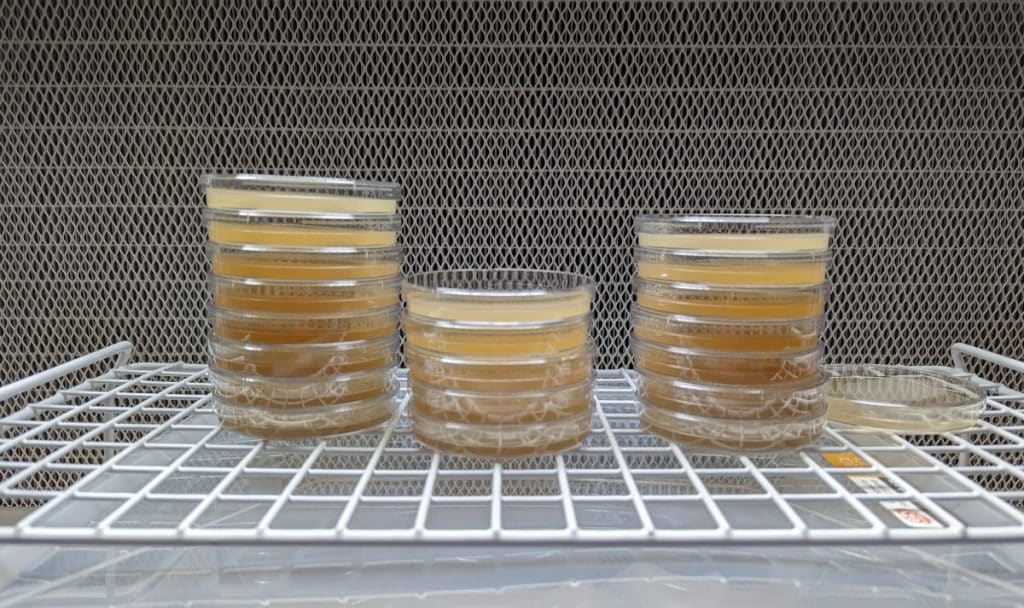Learning to cultivate mushrooms is an exciting journey that combines science, art and a touch of magic.
As you gain experience and produce more mushrooms, adding a lab to your mushroom farm design is a logical step that helps reduce contamination and ensures consistent yields.
Wondering how to design a functional mushroom lab that fits your space and budget?
Read on to learn what a mushroom lab is, why you need one, what equipment you’ll need and what factors to consider when designing your mushroom lab.
What is a Mushroom Lab?
A mushroom lab is a controlled environment dedicated to cultivating mushrooms.
It’s a clean, sterile space where mushroom growers can experiment with different mushroom species, develop new strains, and produce high-quality mushroom mycelium.
Tasks that mushroom cultivators would use a mushroom lab for include:
- Inoculating sterilized bulk substrates
- Creating grain spawn
- Creating liquid cultures
- Doing agar culture work
Mushroom laboratories come in all shapes and sizes, from small, home-based clean rooms to high-tech, positive-pressure rooms with sterilizing units.
High-tech labs with lots of equipment are often financially out of reach for many smaller mushroom cultivators.
Fortunately, you can start with a basic clean room and add features to make it more sterile as you gain experience and your mushroom farming business grows.
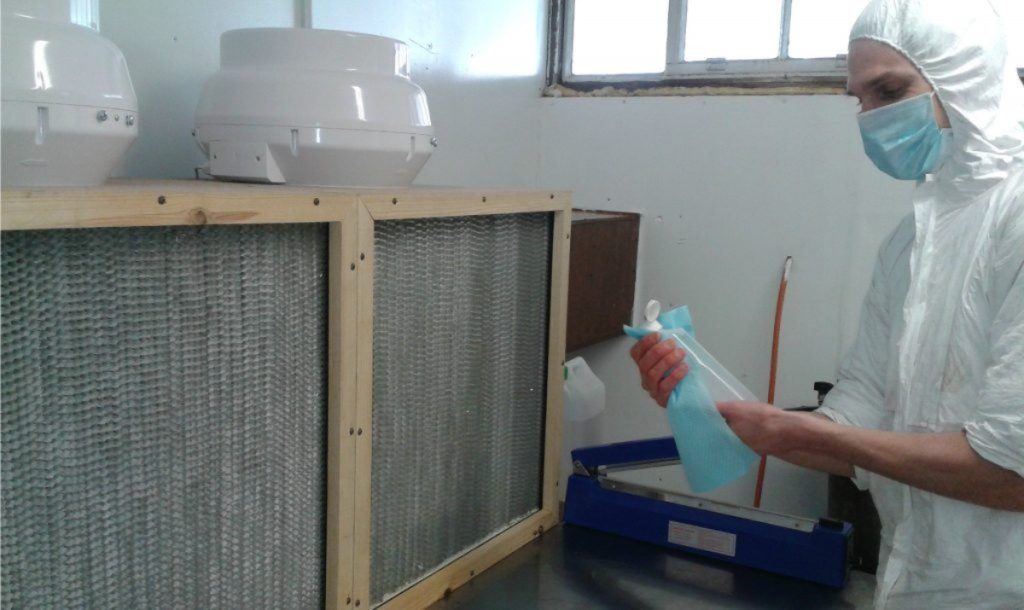
Why Do You Need a Mushroom Lab?
Many small-scale growers, especially those working at home, don’t use mushroom labs.
Instead, they set up a laminar flow hood in a room where other activities happen, for example, in an incubation space near their substrate bags or in a utility room or garage.
This can work if you are careful and ensure you’re always working in the sterile airflow from the flow hood.
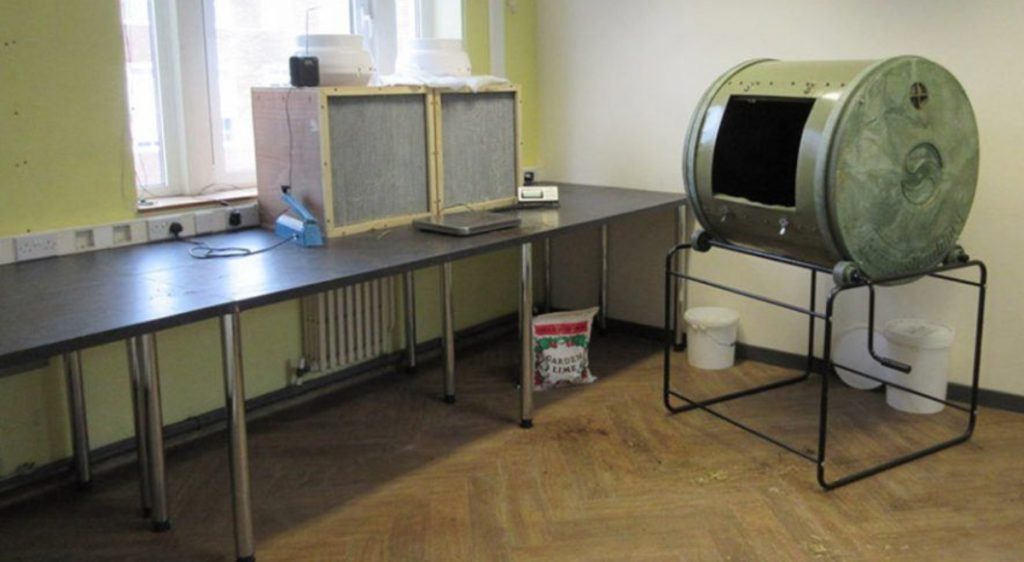
But, a dedicated mushroom lab is advantageous if you’re serious about mushroom cultivation, whether as a hobby or a business. Here’s why:
Contamination Control
Mushroom cultivation requires a clean environment.
In nature, mushroom mycelium competes with various microorganisms with varying levels of success. Mushroom cultivators, however, want to give their fungi the best chance to thrive, thus increasing yields.
A dedicated lab space makes it easier to create a clean environment, reducing the risk of contamination and leading to higher success rates.
You will face fewer contamination issues in a clean room with sterile workspaces than when using a flow hood in a multi-use room filled with airborne spores.
Experimentation and Learning
A lab allows you to experiment with new mushroom substrates, try different techniques and isolate and develop new mushroom strains.
This experimentation can lead to improved yields, unique mushroom strains, or even new cultivation methods.
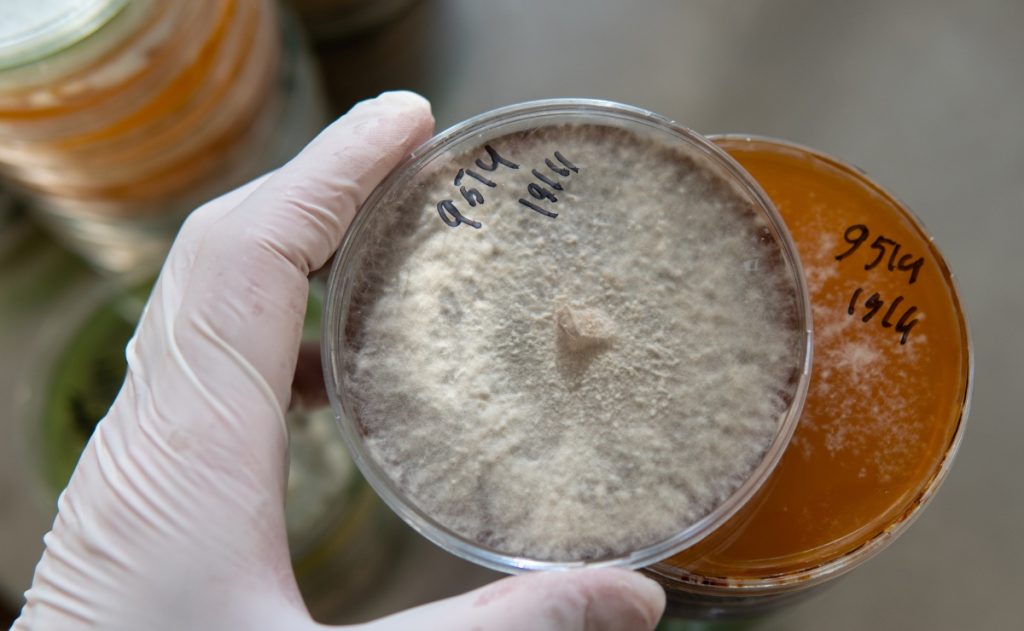
Scaling Up Production
For those looking to move beyond hobby growing, a lab is crucial for scaling up production.
A lab provides the capacity to produce large quantities of spawn and maintain multiple mushroom cultures while minimizing contamination problems.
Safety
Some mushroom cultivation processes require proper safety measures. For example, working with mushroom spores or heat sterilizing tools and substrates.
A well-equipped mushroom lab provides the necessary equipment and environment to carry out these tasks safely.
Legality and Compliance
Commercial growers in some locations may need a proper lab setup to meet health and safety regulations.
Having a mushroom laboratory demonstrates professionalism and a commitment to quality, which could be necessary for obtaining permits or certifications.
Essential Equipment for a Mushroom Lab
Now that you know more about the advantages of having a mushroom lab, you may wonder, “What do I need for a mycology lab?”
As mentioned above, creating a basic mushroom lab in a small room is relatively inexpensive and easy. Here’s what you’ll need.
- A closed or sealed space with easy-to-clean walls and floor
- Cleanable work surfaces (stainless steel tables are ideal)
- A laminar flow hood
- Disinfecting solution
- Gloves, facemask and clean overalls
Depending on the task, you may also need the following items:
- Petri dishes
- A Scalpel
- An alcohol burner for sterilizing the scalpel or syringe needles
A more advanced mushroom lab could also include fans and HEPA filters installed to create positive pressure inside the room.
Adding positive pressure to a lab prevents dust, spores and insects from entering the room through gaps and ensures all air coming into the lab is contaminant-free.
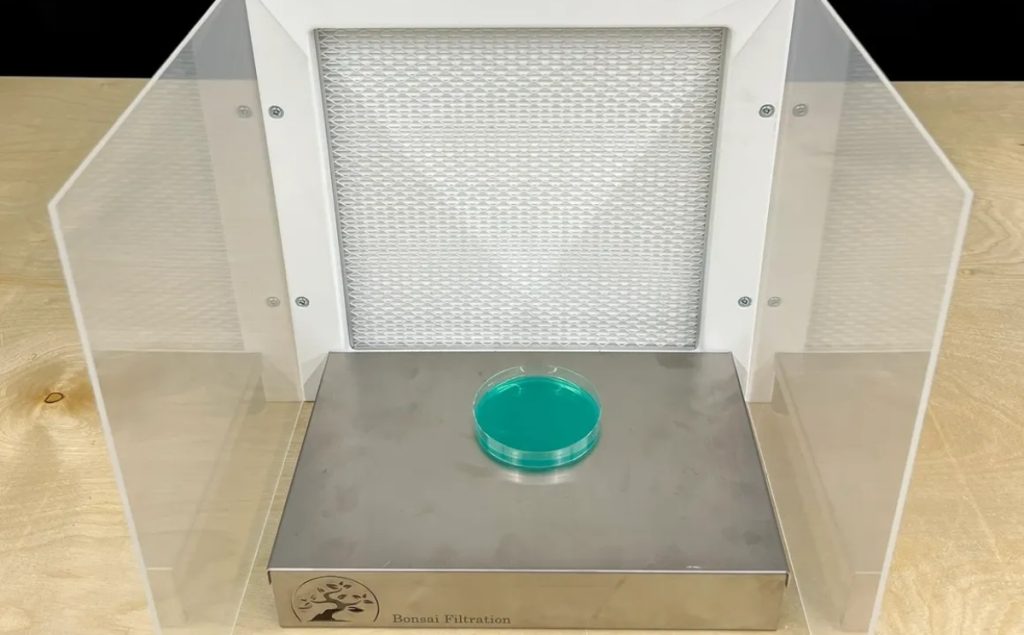
Factors to Consider When Designing a Mushroom Lab
Setting up a mushroom lab can seem overwhelming when you’re new to mushroom cultivation.
However, it’s not as complicated as it seems, and creating an entry-level lab will set you up for success.
Key factors to consider when designing your mushroom lab include:
1. Location
Your mushroom lab should be a separate, dedicated room away from areas with high moisture or dust and as far away as possible from the fruiting room air output.
When choosing the best location for your mushroom lab, it’s crucial to consider the entire growing process and the movement of the substrate and mushrooms through the system.
Ideally, you want your sterilizer in the lab or, if there’s not enough space, placed directly next to the lab to minimize contaminant exposure when moving the substrate from the sterilizer to the lab.
To save time, it’s also beneficial to have the lab close to the incubation area for fast movement of inoculated bags to this area.
If you have a positive pressure mushroom lab, you’ll also need to consider the air intake placement.
Ideally, it should face away from prevailing winds as these carry dust and have a higher spore load. Additionally, very windy weather can interfere with the air pressure in your lab.
2. Size and Layout
When it comes to size, bigger is not always better, as larger spaces need more cleaning and air filtration.
The goal is to create an environment that minimizes the risk of contamination while providing a comfortable and efficient workspace for sterile techniques.
All you need is enough room for all the necessary equipment and comfortable movement, and when deciding on a size, don’t forget your potential future needs.
That being said, the size of a mushroom lab is often dictated by the space and budget available.
Here are some questions to ask yourself to help you determine the best size:
- How many grow bags or containers are you likely to be inoculating per batch?
- How much space would you need to have all your sterilized substrate downstream from your flow hood?
- How big is your laminar flow hood?
- Do you plan on using trolleys or shelving units, and if so, how big are they?
- How many people are going to be working in the lab at the same time?
You have numerous options when it comes to the layout of your lab. Play around with the space available to create a design that supports your workflow, minimizing unnecessary movement.
It sometimes helps to create a drawing to visualize how all the elements will fit into your space.
The specific design will depend on the size of your business, your budget and the focus of your mushroom cultivation efforts.
Ideally, position your flow hood so it blows toward the room entrance. This position allows it to blow clean air outwards and helps prevent contaminants from entering when you do.
3. Surfaces
The surfaces in your lab are a significant factor, as porous or biodegradable surfaces may harbor microorganisms.
And when referring to surfaces, we mean everything, including worktops, shelving, storage units, walls and floors.
Smooth, non-porous materials that can withstand regular cleaning with disinfectants are ideal.
Also, if possible, select units with rounded corners to facilitate cleaning and help prevent dust accumulation.
We recommend the following:
- Stainless steel tables and shelving
- Walls painted in epoxy paint or made using fridge panels or plastic sheeting
- Vinyl floors or sealed concrete floors painted with epoxy paint
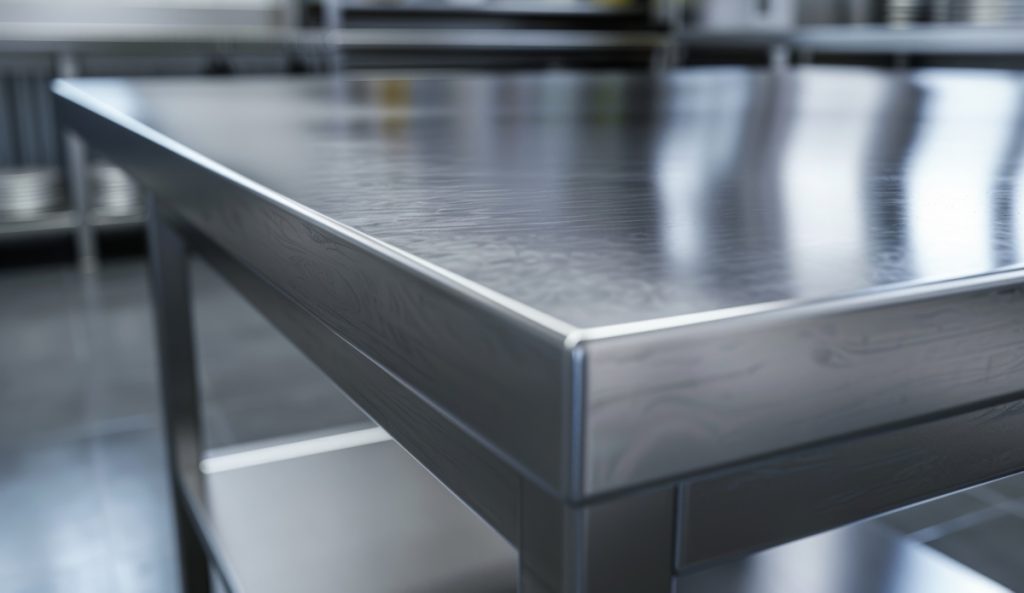
4. Air Quality Control
In a basic lab, growers use their laminar flow hood to create clean airflow and remove contaminants from the room.
Many small-scale growers are successful just using a laminar flow hood in a small space, but for larger labs, adding a HEPA air filtration system and positive pressure is the best way to ensure clean, contaminant-free air
5. Lighting and Power Sockets
Bright, even lighting is beneficial in a lab, especially when you’re performing detailed tasks.
It’s best to use enclosed, flush-mounted light fixtures that are easy to clean and don’t accumulate dust.
Use power sockets with waterproof, dust-proof housings and place them near the laminar flow hood and any other electrical equipment you plan on using in your lab.
6. Entry and Exit Protocols
One of the considerations when designing a lab is preventing contaminants from entering the room when you open the door to go in and out.
Many mushroom farmers use an antechamber as a transitional space between the clean room and the outside world.
An antechamber is an entryway or small room with two doors. One leading into the mushroom lab and the other to the outside space.
An antechamber does not have to be a substantial space. You need enough room to change into a clean lab coat and your lab shoes, gloves, hair cap and mask.
Some antechambers include a shoe wash and an air curtain at the entrance to help remove particles from clothing.
Final Thoughts
Although you can get by using a laminar flow hood in a multi-use space, a designated mushroom lab is crucial for mushroom farmers who want to scale their production and grow a broader range of mushroom species.
Working in a clean, sterile space helps reduce contamination, creating more consistent yields.
Consistent yields allow small-scale farmers to plan ahead and take on regular repeat business, allowing them to grow.
To learn more about growing fungi and starting a mushroom farm, visit our Mushroom Growing Hub or sign up for one of our mushroom cultivation courses.
